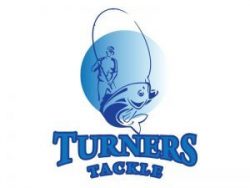Diving Deeper: Exploring the Differences Between Coarse Fishing and Game Fishing
The world of angling is as diverse as the waters it encompasses, with various fishing disciplines catering to different preferences and species. Two popular forms of fishing in the United Kingdom are coarse fishing and game fishing, each offering a unique set of challenges and experiences. In this guide, we will delve into the key differences between coarse fishing and game fishing, shedding light on the distinct characteristics that define these two captivating angling pursuits.
Coarse Fishing:
- Target Species:
- Coarse fishing is primarily focused on catching freshwater fish that are not classified as game fish. Common species pursued in coarse fishing include carp, roach, bream, perch, and tench. These fish are typically abundant in still or slow-moving waters such as lakes, ponds, canals, and rivers.
- Tackle and Techniques:
- Tackle: Coarse fishing often involves robust tackle, such as carp rods and reels with a higher line strength. The aim is to handle larger and more powerful fish.
- Techniques: Various techniques are employed in coarse fishing, including float fishing, ledgering, and feeder fishing. Baits such as maggots, worms, and pellets are commonly used to attract coarse fish.
- Water Conditions:
- Still Waters: Coarse fishing is well-suited to still waters like lakes and ponds, where anglers can find a variety of species in a relatively calm environment.
- Seasonality:
- Year-Round Activity: Coarse fishing is a year-round activity, and different species may be more active during specific seasons. For instance, carp are often targeted in warmer months, while roach and perch can be caught in colder seasons.
Game Fishing:
- Target Species:
- Game fishing primarily revolves around pursuing salmon, trout, and sometimes grayling. These species are considered game fish due to their sporting qualities and are often found in rivers and streams with swifter currents.
- Tackle and Techniques:
- Tackle: Game fishing tackle is typically more lightweight and designed for finesse. Fly rods and reels are commonly used, and the emphasis is on presenting artificial flies with precision.
- Techniques: Fly fishing is the predominant technique in game fishing, involving the use of artificial flies to mimic the aquatic insects that form a significant part of the diet of these fish.
- Water Conditions:
- Moving Waters: Game fishing is often associated with rivers and streams where the current provides a dynamic environment. The flowing water requires anglers to adopt specialized techniques to present their flies effectively.
- Seasonality:
- Seasonal Peaks: Game fishing experiences distinct seasons, with specific periods designated for fishing, particularly for salmon. Salmon fishing, for example, may have specific seasons dictated by regulations to protect spawning populations.
Conclusion:
While both coarse fishing and game fishing share a common love for the water, the distinctions lie in the target species, tackle, techniques, and the nature of the fishing environment. Whether you are drawn to the serene waters of a still lake for coarse fishing or the rhythmic flow of a river for game fishing, each discipline offers a rich and rewarding angling experience in the diverse landscapes of the United Kingdom. As you explore these different facets of the fishing world, you’ll discover the unique joys each has to offer, enhancing your appreciation for the sport as a whole.

